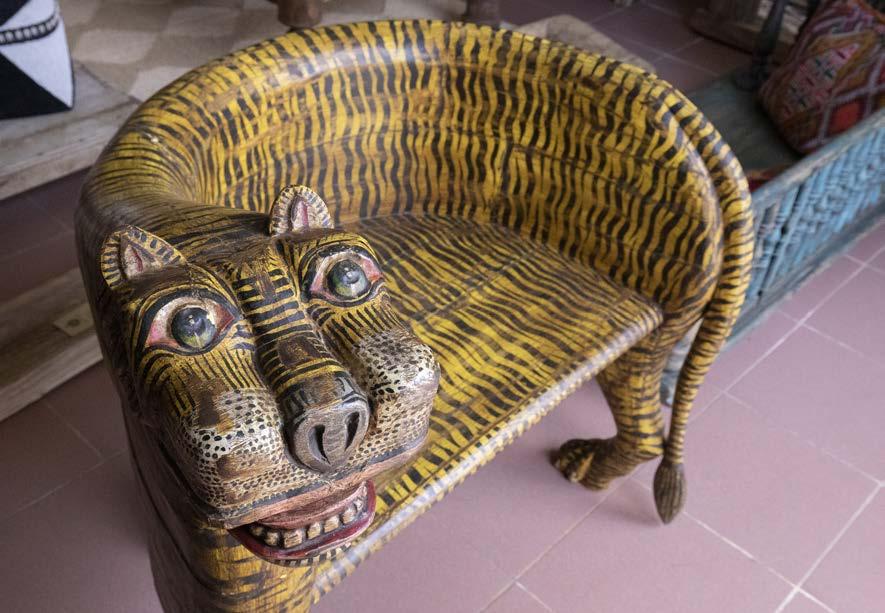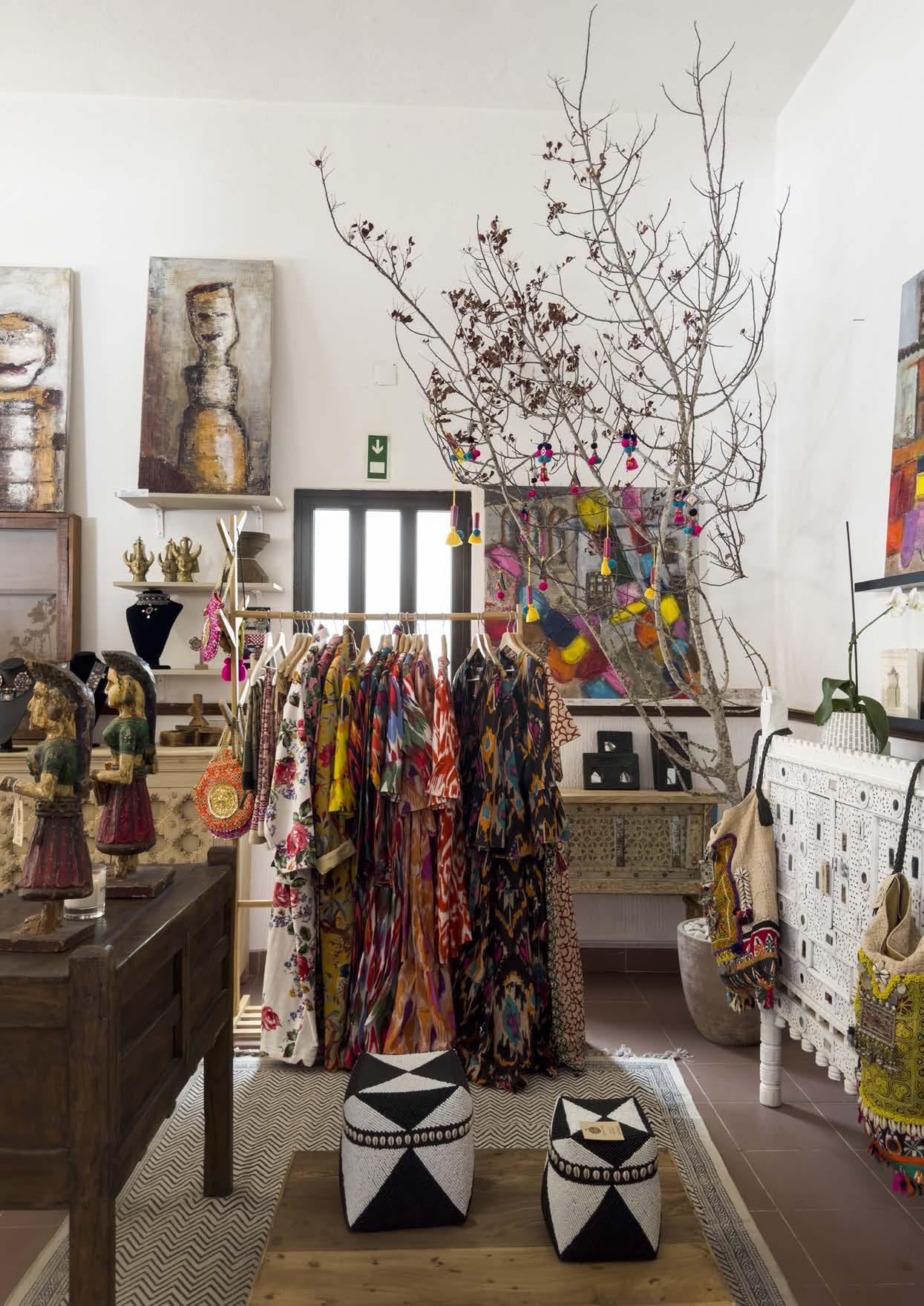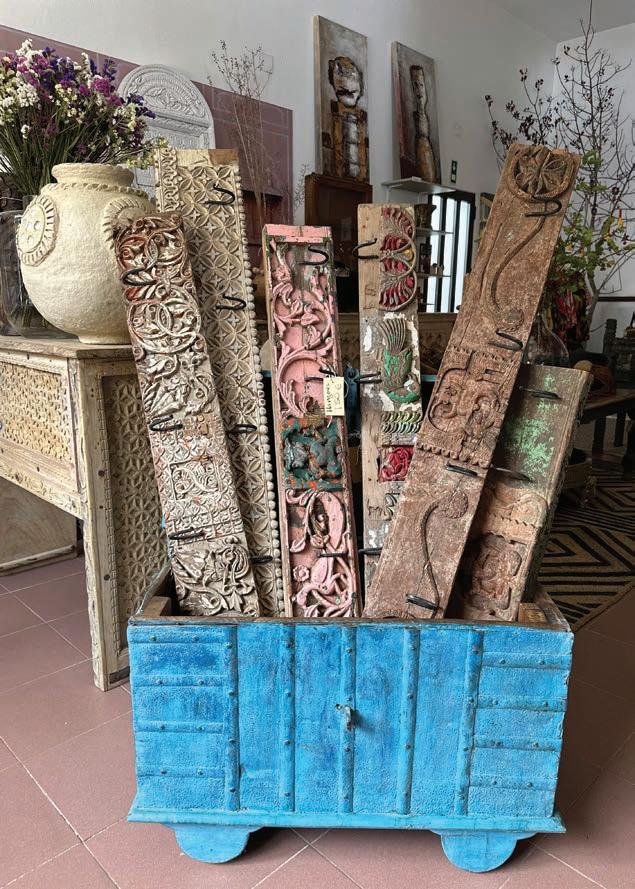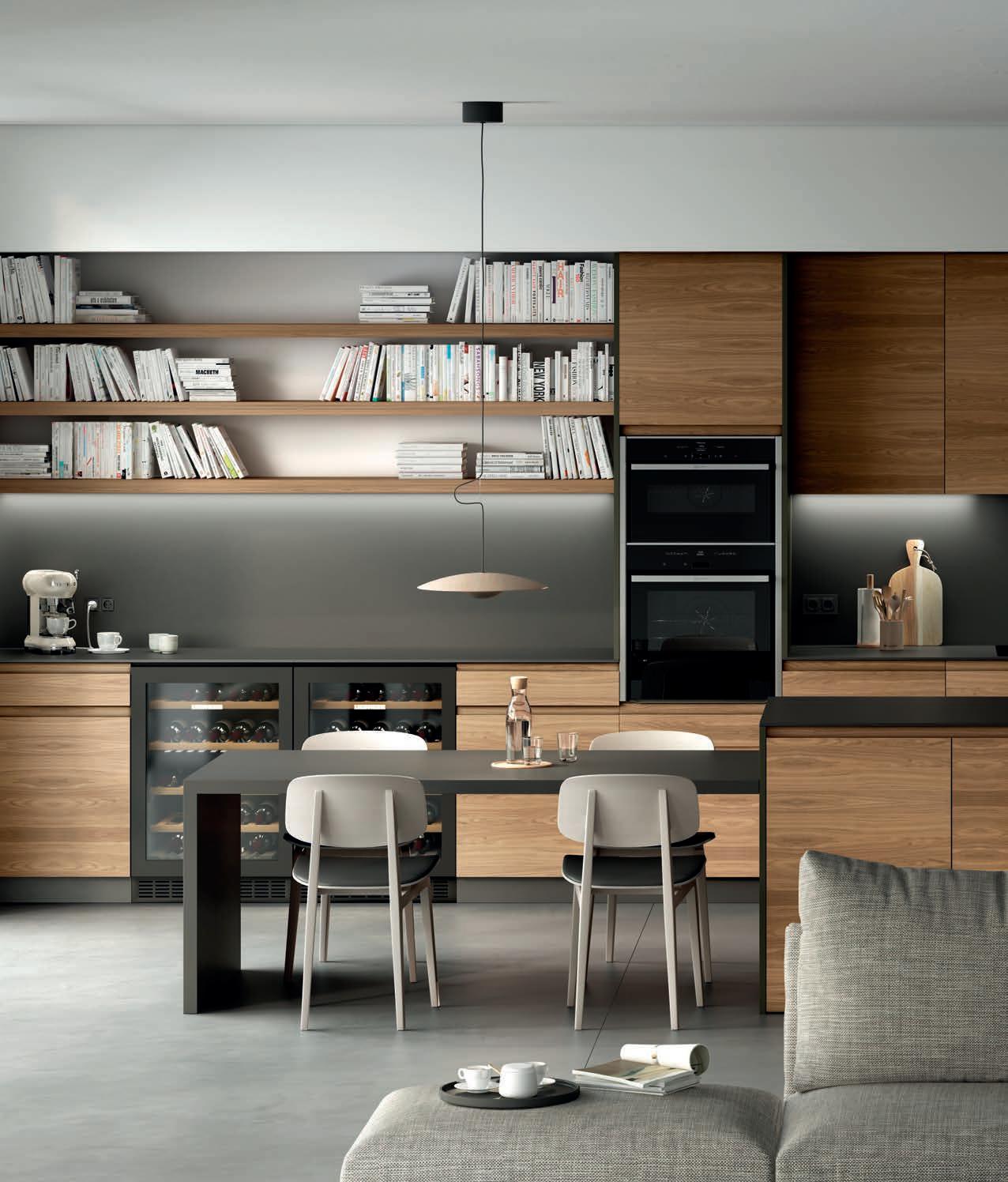
3 minute read
TREASURE TROVE
by Martin
FROM AN APPOINTMENT-ONLY BACKSTREET ATELIER IN S Ã O BR Á S TO AN AIRY AND ENCHANTING STORE IN MONCARAPACHO, PAULA PINTO OF ALAMAYA IS GOING PLACES, AS HER COLLECTION OF COLLECTIONS FINDS A NEW HOME
Words: SUSI ROGOL-GOODKIND
SOME MONTHS ago, we followed Paula Pinto from room to small room of her studio shop in São Brás, where every space was taken up by wonderful finds from India and Africa – intricate artisan pieces from individual craftsmen upholding traditional skills that have been part of the local community for generations, alongside delicate wood carvings, handprinted fabrics and woven reeds that form shields. And of course, baskets galore, from small and curvy to huge and billowing.
Paula herself, born in Luanda and raised in Lisbon, is a world traveller, following not only her heart, but her head, too, that takes her to tiny communities in faraway places where the sheer creativity of the locals leads to artworks that are one-of-a-kind pieces, each with its own story of the materials used, the occasion it was made for and the ancient techniques employed in producing them.
What Paula gathers together is a long, long way from today’s commercial offerings from the big chain stores. It is what defines ethnic, organic, sustainability – all the expressions of conscience and caring, combining those with things of a rare beauty. Originality, too, is key to the design proposition.





Everywhere you look, something special catches the eye and fires the imagination. This is a glorious mix of ancient workmanship and contemporary interpretation
Moving on
And now Alamaya, and all those wonderful finds, large and small, have a new home, right in the centre of the little village of Moncarapacho, north of Olhão, which most people know only for its big, monthly market.

“I love small, quaint towns,” says Paula, “but that aside, I was ready to be able to offer customers the opportunity to view and shop when they chose, rather than be governed by pre-made appointments.”
And of course, having more space, means having more pieces on show. New to the collection are beautiful handcarved doors, one from India which is vast, and door frames and painted posts. There are cupboards etched with detail, and hidden drawers to store family secrets. There are chairs elaborately shaped to represent a sleeping tiger, bedframes strung with rope panels, giant fans to cool you on a hot afternoon, and wall hangings richly coloured and extravagantly textured.
Paula heads out on her journeys of discover a few times a year, visiting communities she is already working with and following up on leads that take her to different areas and other talents. “I’ve found jewellery recently, made by a lady I met by chance in Delhi. With a small group of artistic workers, she produces incredibly intricate pieces that are an expression of her passion for colour and her willingness to venture into unbridled design. She is making for me now and the collection I have in store is just extraordinary. Brave and bold and so beautiful.”
Going natural Fashion is also new to the Alamaya offering, and the result of another chance meeting – one that has developed into a friendship – in Jaipur. The small rail of dresses and stunning caftans, tucked between furniture and decorative accessories, is almost irresistible, not only for its stylish originality but also for its colours and ecofriendly fabrics.
“Customers are certainly looking for more natural options,” Paula says. “Not only when it comes to their fashion choices, but very much for their homes. They love original pieces and want to know the story behind them, and also about the working environment where they are made. Often, they are looking for that beach house feel but with soul. That’s how I would describe the Alamaya ethos – a place where one finds pieces with soul for the soul.”
Paula goes to markets around the world, talking to other shop owners and sharing tips and suggestions, and often meeting up with friends she has made in India. “That exchange of ideas opens so many new paths,” she says. “Through those shared conversations and the guidance that results, I often go on to find suppliers who are new to me and outstanding old pieces, like old doors and pillars that I ask the artisans to upcycle to create all sorts of cabinets or more simple things, like candle holders.” Colombia and Mexico, known for their craftworks, are on the agenda for future investigation. “Generally, the prices there are high,” says Paula, “so it is vital to secure the best direct contacts, rather than go the third-party route. That’s something I am working on now.” With a seamstress at hand, ready to make up special pieces to order, like cushions and curtains from the selection of fabrics at Alamaya, and an interior designer avaiable to advise customers on their decorating choices, the service at Alamaya is exemplary. And skilled carpenter João, who shares the space with Paula, can put his expertise into re-fashioning certain pieces to make them sit perfectly in a new environment.
It is difficult not to fall in love with the feel of the place that Paula has created. Alongside the dark carved mirrors and outsized naïve wood and stone figures and cabinets dressed with gilt, there are accessories like straw mats and cane sofas and chairs, and block print sun umbrellas that will add a new personality to any terrace.
Go to Alamaya and you’ll find it difficult to leave empty handed. And if you harbour a wish for something different and special, Paula will work from photographs and find the trusted craftsperson able to deliver that dream. It doesn’t get much better than that.











